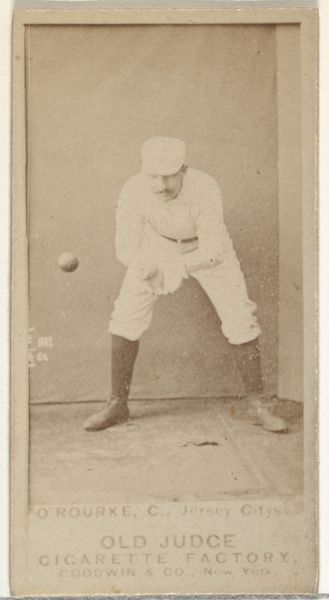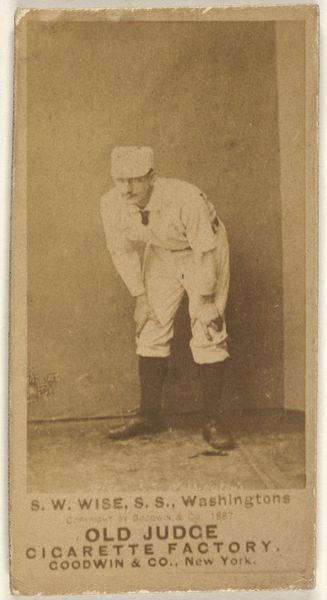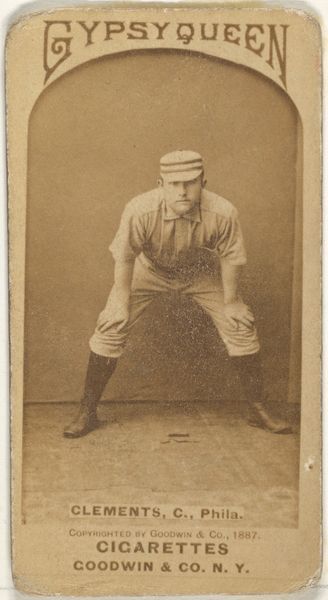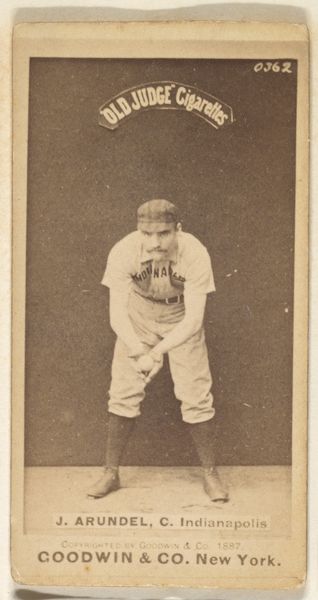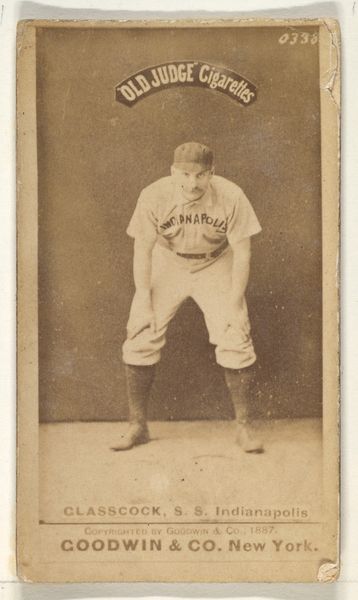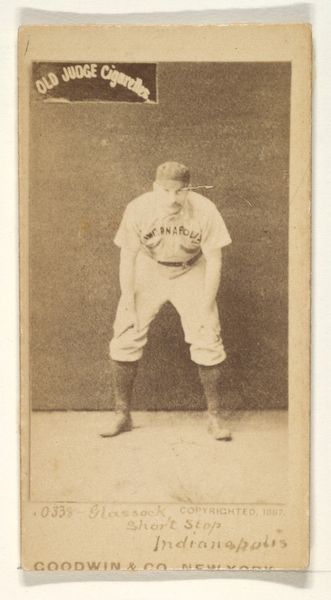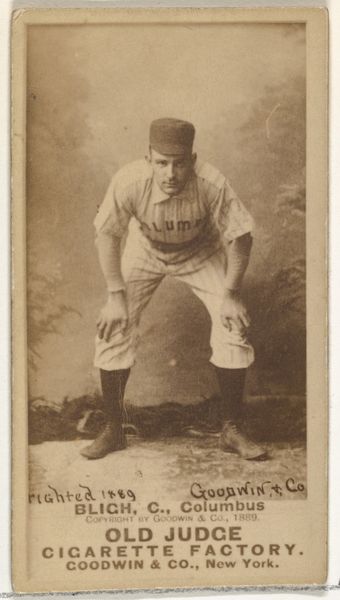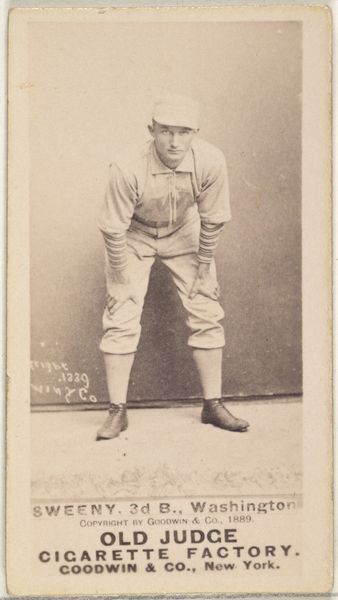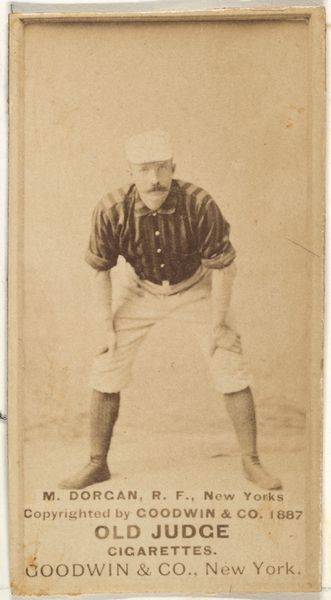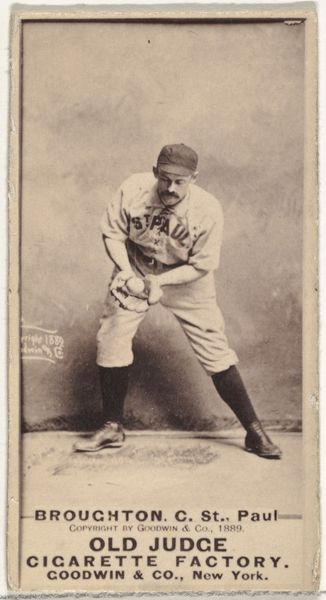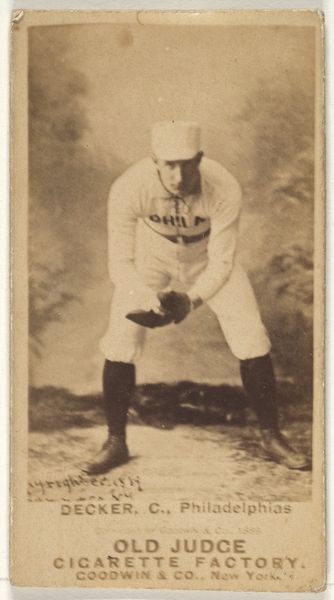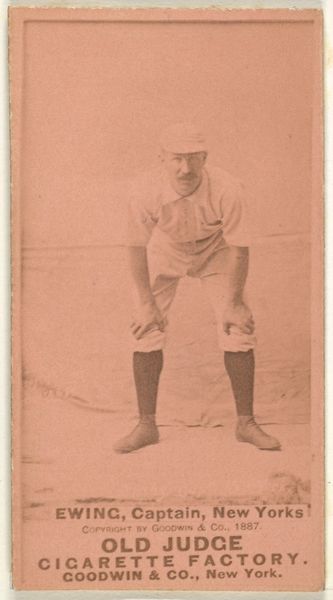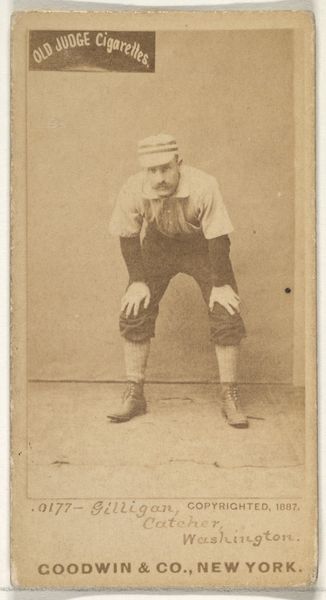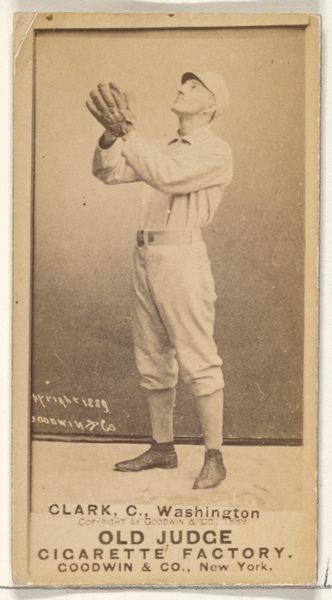
O'Rourke, Catcher, Boston, from the Old Judge series (N172) for Old Judge Cigarettes 1887
0:00
0:00
print, photography, gelatin-silver-print
#
portrait
# print
#
impressionism
#
baseball
#
photography
#
gelatin-silver-print
#
men
#
athlete
Dimensions: sheet: 2 11/16 x 1 3/8 in. (6.9 x 3.5 cm)
Copyright: Public Domain
Curator: Here we have an 1887 gelatin silver print by Goodwin & Company, part of the Old Judge Cigarettes series. It features a baseball player, O'Rourke, catcher for Boston. Editor: There's something very striking about its composition. The muted tones give it an ethereal, almost dreamlike quality, like looking at a figure emerging from the past. Curator: Exactly! These cards were essentially advertising, premiums included with cigarette packs. They give insight into the early commodification of athletes and the link between sports, masculinity, and consumer culture. Who was deemed worthy of representation, who had access? It raises interesting questions of gender and class in late 19th century America. Editor: Absolutely, and the choice of gelatin silver as the photographic process speaks volumes. It allowed for mass production, fitting the needs of an advertising campaign, but also gives the photograph a unique physical presence. Think about how these cards were handled, traded, maybe stuck in pockets... Curator: The wear and tear these images accrue are so interesting— they mark history. There's the inherent value now conferred to them too, like it represents nostalgia around the sport as well as an obsession with celebrity, as well as perhaps the more fraught historical lineage of how media and industry began. It also makes me consider baseball in relation to constructions of American masculinity. Editor: Yes, this photograph itself has been produced, consumed, and valued within a specific cultural context. Think of the labor involved in making the print, packaging the cigarettes, and distributing them – all embedded within this seemingly simple image. And we have a specific understanding of material culture. Curator: Examining such an item through intersectional frameworks allows for dialogue on everything from labor rights and consumerism to visual representations of identity and power. It reminds us that art doesn’t exist in a vacuum, it reflects and shapes broader social narratives. Editor: It pushes beyond mere aesthetics to examine the networks and structures that create the artwork, its context, and value, highlighting both its materiality and broader consequences. Curator: Exactly. These brief encounters through time serve as invitations to reconsider both the making and meanings attached to art. Editor: And remind us of the ongoing need to look closely at the means of production behind the images that surround us.
Comments
No comments
Be the first to comment and join the conversation on the ultimate creative platform.
